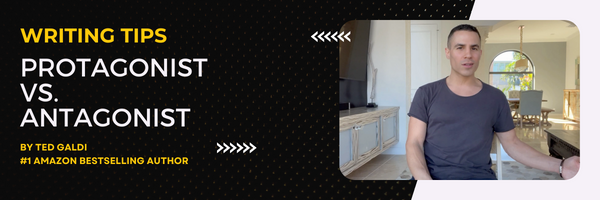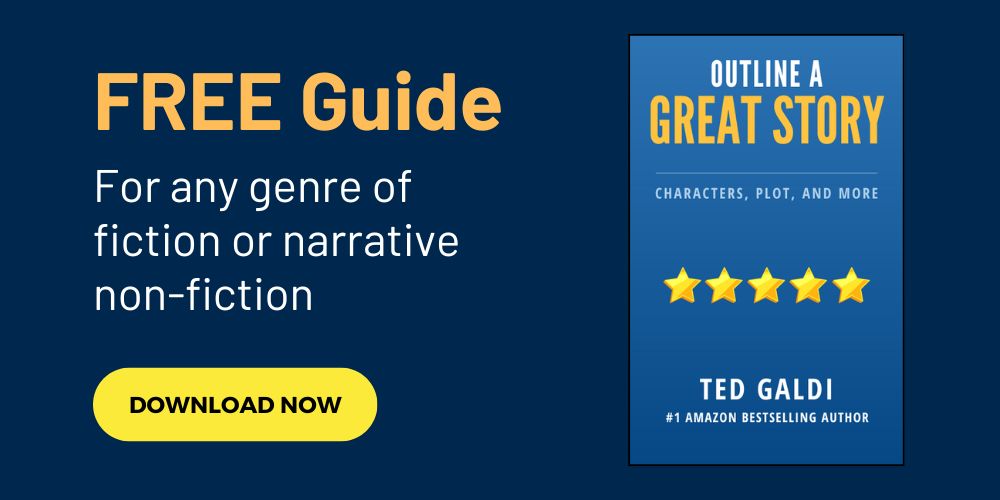Protagonist and Antagonist: What's the Difference?Find out the difference between a protagonist and antagonist in writing, and how to create compelling versions of these characters. Want to write an awesome story? Download my free outlining guide. What is a protagonist and antagonist?A protagonist is the main character of a story. The audience follows this character as the person pursues a goal, such as catching a criminal or winning a boxing match. An antagonist is any character who tries to prevent the protagonist from achieving the goal. Most stories have one protagonist. However, they often have more than one antagonist. That being said, one of these antagonists tends to stand out. This character puts more pressure on the protagonist than other opponents and plays a bigger role in the plot. I like to refer to this central antagonist as the main villain. What is the difference between a protagonist and antagonist?The defining difference between these characters refers to what each wants in the story - their wants are in direct conflict with each other. If the protagonist wants to achieve a certain goal, the antagonist has a want in the story that, if accomplished, would prevent the protagonist from accomplishing theirs. For example, in a crime story, the protagonist may be a detective with a goal to catch a murderer. The main villain in this story would be the murderer. The villain's goal is to get away with the crime. If the villain wins, the protagonist loses, and vice versa. Physical, mental, and cultural traits of your protagonist and antagonistWhen developing a character, you should be mindful of three major categories: the physical, mental, and cultural. Physical traits refer to a character's appearance and bodily capabilities. Mental traits refer to a character's disposition and psychological capabilities. Cultural traits refer to the context in which the character lives (ex, what's their job), plus has lived through life (ex, where they grew up and in what kind of family). Your protagonist and antagonist should not have the same blend of traits across all three categories. To create drama in your story, you want your villain be more imposing than your hero in terms of the traits that would determine the winner in their "clash of wants." For example, if you were writing a boxing story, your antagonist should be bigger and stronger than your protagonist. That being said, you should give your hero and villain at least one trait in common. This should be a characteristic your protagonist does not like about themself. I view this like a "dark mirror." The commonality can force your hero to recognize the severity of their own flaw, look inward, and try to fix it. A thread of internal growth can make your story more compelling. Traits of a heroAs a writer, you want your audience to root for your protagonist as the character pursues a goal. This does not necessarily mean your protagonist must be likable. To get your audience behind your story's hero, you need to let your audience to identify with the character. A good way to do this is by giving your hero something to lose if their goal is not accomplished. For example, in a thriller story, the protagonist may be committing a crime, like robbing a bank. However, the character needs the money to afford a medical treatment for his daughter. If he fails to rob the bank, his daughter will die - he has a lot to lose. Even if your audience doesn't approve of bank robbery, they can still identify with this protagonist. Traits of a villainTo create a great antagonist, you want to use empathy as well. Your audience should understand where this character is coming from, even if the character is responsible for horrible acts that the audience disdains. I recommend two techniques for creating empathy with your villain: (1) Give the antagonist some trauma from earlier in life that's responsible for their twisted behavior in the present. For example, maybe your villain was beaten by a stepfather, then grew up to kill men who remind him of the stepfather. (2) Give the antagonist an admirable end to fight for, yet have them try to get there by vicious means. For instance, possibly your villain is fighting against corporate corruption, but part of their plan involves murdering corporate executives. Even if you create empathy for your villain, you still want to play up this character's dark side. The depth of this dark side relates to the genre you're writing in. For instance, if you're writing a horror story, you want your villain's dark side to be extreme. This person might be a sadistic killer. If you happen to be writing a love story, your antagonist shouldn't necessarily be murdering other characters, however, a dark side should still be pronounced. Possibly this villain is a serial liar, who hurts other characters emotionally without regret. Hero transformation by villainThrough your story, your antagonist should constantly test your protagonist. This pressure should force your hero to look inward and grow as a person. Without this personal growth, your hero would fail to defeat the villain by the end. Thus, despite the extreme hardship your villain puts your hero through, the dynamic actually improves your hero's life, at least to some degree. By the end of the story, the hero's personal growth allows him or her to fill some emotional void (known as "the need"). Here's an example...
Thus, the set of traits Jane has at the beginning of the story have changed by the end. Many of the individual traits remain the same, however, a bad one (standoffish) is gone, replaced by a good one (open-minded). If Lucy, the villain, didn't apply external pressure, Jane never would've had a reason to undergo any personal growth. Want more writing advice?Download my FREE outlining guide:
0 Comments
Leave a Reply. |


 RSS Feed
RSS Feed